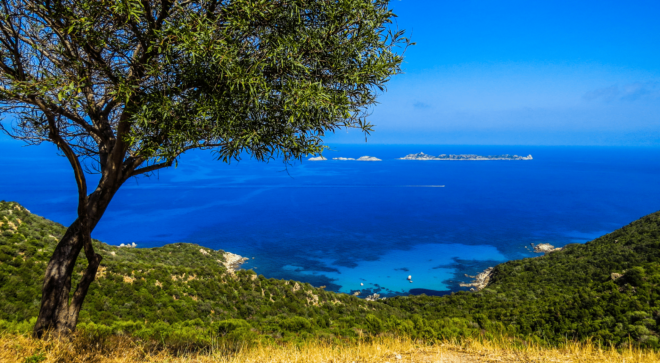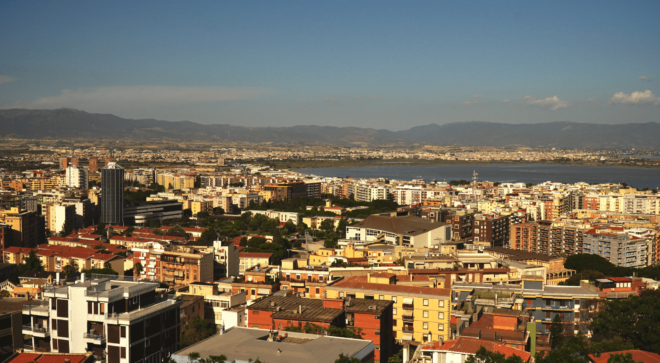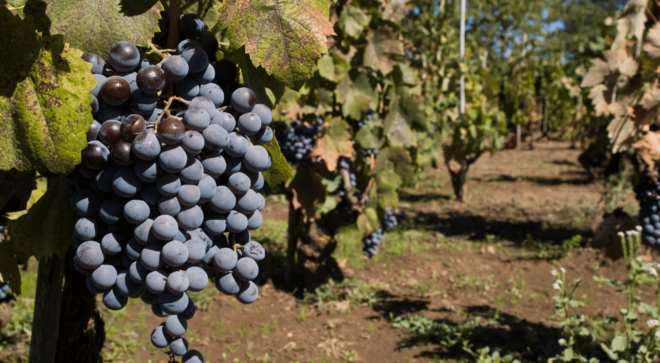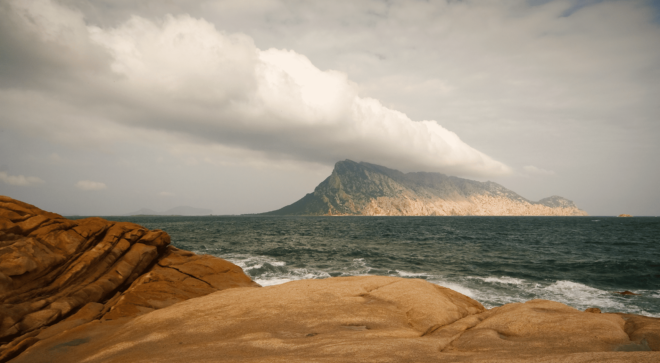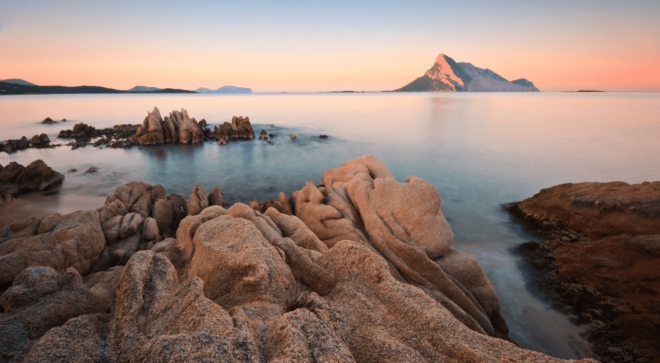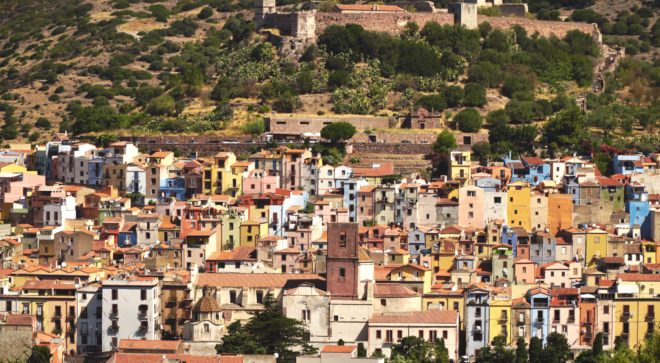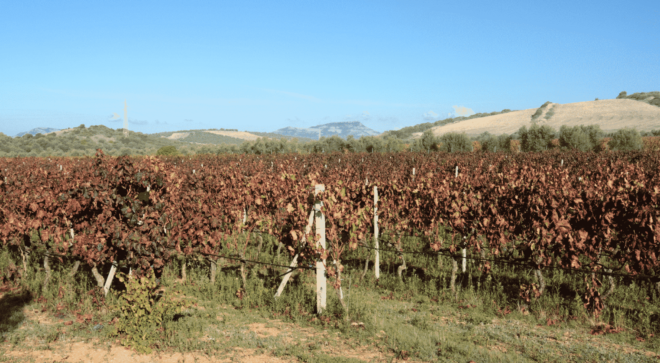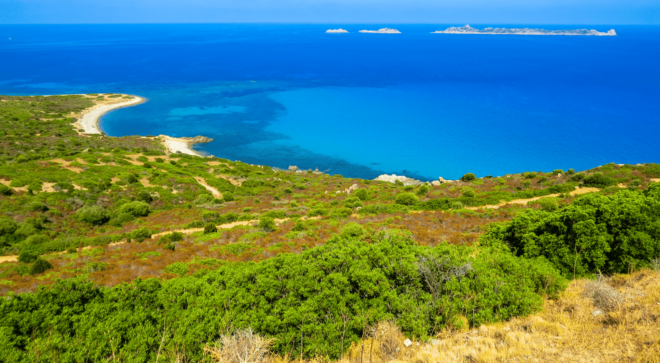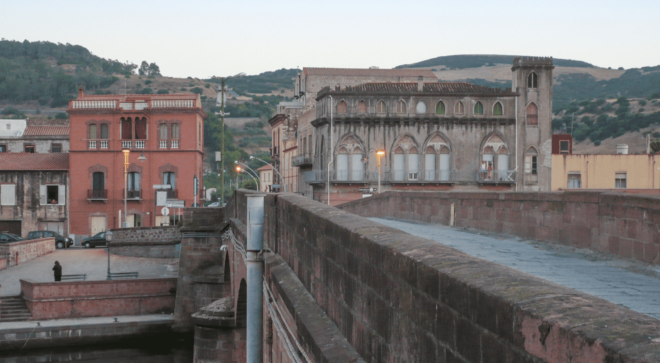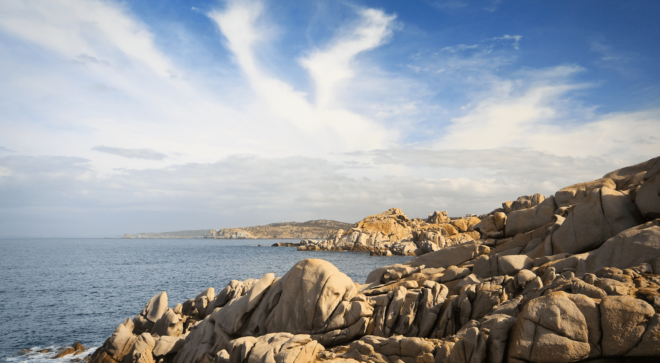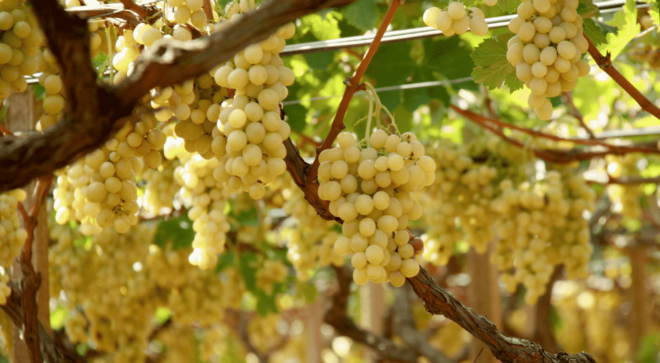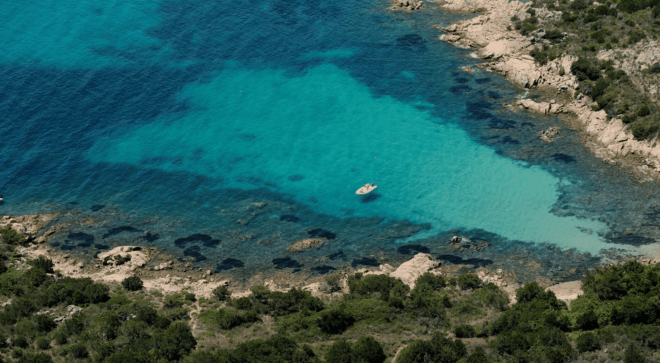Sardinia
Known for its turquoise waters, sandy beaches and intimate coves, Sardinia is a hit among tourists. Within this island region there is a variety of treasures to discover, including some of Italy’s most unique gastronomic delicacies.
Overview
Wines
Food specialties
Unmissables
Events
Overview
Considered to have some of the most beautiful beaches in Europe, the island of Sardinia is one of dualities.
With a coastline attracting Europe’s jet set, this façade belays the islands inner beauty, one with snow capped mountains and ancient ruins. Viewed as one the oldest geological bodies in Europe, the island’s people and its geography share an ancient and storied history. Providing a heaven for mountaineers and beach lovers alike, Sardinia’s strength lay in embracing the duality of its rustic roots and that of its glitzier, costal tourist industry.
Its capital, Cagliari, situated in the gulf of Angels, provides a pleasant mix of history and nature. The Castello district, with its ornate palaces, allows for a great view of the city while also soaking in the warm Mediterranean sun. For travelers looking for something more casual, the Poetto beach, the longest in the area, acts as a meeting spot and overall great place to unwind after a long day.
Wines
Warm Sun and Exceptional Wines
With its warm Mediterranean climate and gentle sea breeze, Sardinia has become home to some truly exceptional wines. Of note are the white’s being produced in the Vermentino di Gallura wine region, the only DOCG appellation on the island. Further South, the Cannonau appellation is considered one of the oldest on the island.
Flagship Wine Appellations
Food specialties
Tradition and Sustainability
Being one of Italy’s more secluded regions, Sardinian culture and to a large extent its culinary traditions have come to reflect this. With a strong history of herding, many local dishes were created to meet the demands of the agricultural based economy. Pane Carasau, a thin flatbread conceived to provide food for the islands shepherds, has in turn become a staple of the island. The bread was often baked to have as little moisture as possible to diminish the possibility of mold.
The town of Carloforte on the picturesque Isola di San Pietro, is home to the local delicacy of Tonno Rosso. Known for its bluefin tuna, the town has developed the tradition of utilizing every part of the fish, with dishes using the heart and tuna tripe. Local restaurants also make a point of preserving any leftovers so as to maintain fish numbers during off season periods.
Flagship Food Appellations
Unmissables
Discover the Costa Smeralda
Visiting Porto Cervo, the tourist capital of the Costa Smeralda, gives a brief glimpse into the glamour and high pace life of Europe’s jet set. It’s turquoise waters and expensive cafes provide the perfect backdrop from which to people watch and swim the afternoon away.
Further in land the sleepy town of San Pantaleo, provides a much more grounded experience. The town, centered around a quiet piazza, showcases an authentic Sardinia, where local traditions still take precedence over the more commercialized coastal towns.
One of the most beautiful place to visit and spend time through wineries and other food producers is the Sinis Peninsula. Sinis is one of the most characteristic corners of Sardinia, a natural paradise where intact natural ecosystems are concentrated in small area, making this territory ever more impressive.
Events
Sardinia, without counting the beauties of nature and the archaeological sites, is a region to discover and know for its many local festivals linked to traditions and for its religious celebrations where to enjoy the scents of a peasant culture of yesteryear. All year round you can participate in events typical of the region.
Carnival is the party par excellence during the winter period. The festivities of this region are different in each Sardinian village, in addition to deviating from the usual liturgical calendar. Carnival begins everywhere on February 2 with the celebration of Canderola , but traditional masks begin to be worn in the streets during the fires for Sant’Antonio Abate on January 14.
Among the religious and peasant festivals of the summer months, we must absolutely mention the two most famous: the festival of Candelieri in Sassari and that of Redentore in Nuoro.
On the night of the 31st, it is customary to leave the table set so that the deceased of the family can dine. One of the typical dishes prepared is the Culurgiones, especially in Ogliastra. The typical decorations of this festival are the lanterns in the shape of a skull from the carved pumpkins called “Sa Conca e Mortu”.
Learn more about
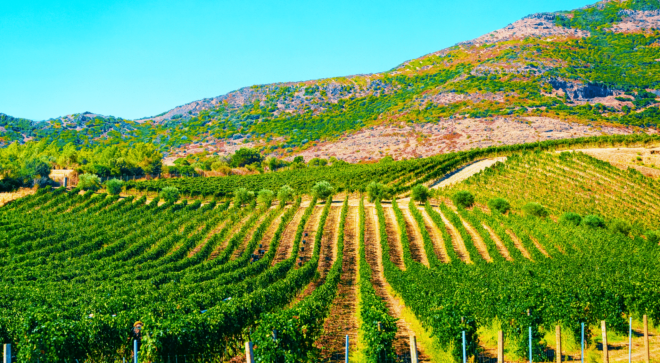
Photo gallery
Taste the specialties
Learn more
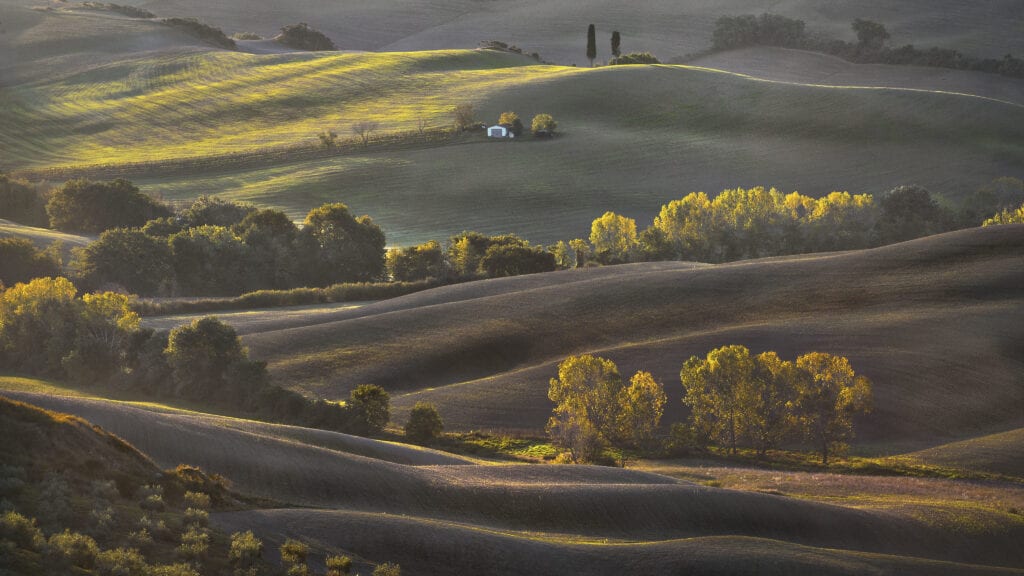
Discover italy
Are you curious by nature? Are you a foodie? Discover the rich culture and gastronomy that is particular to each region.

